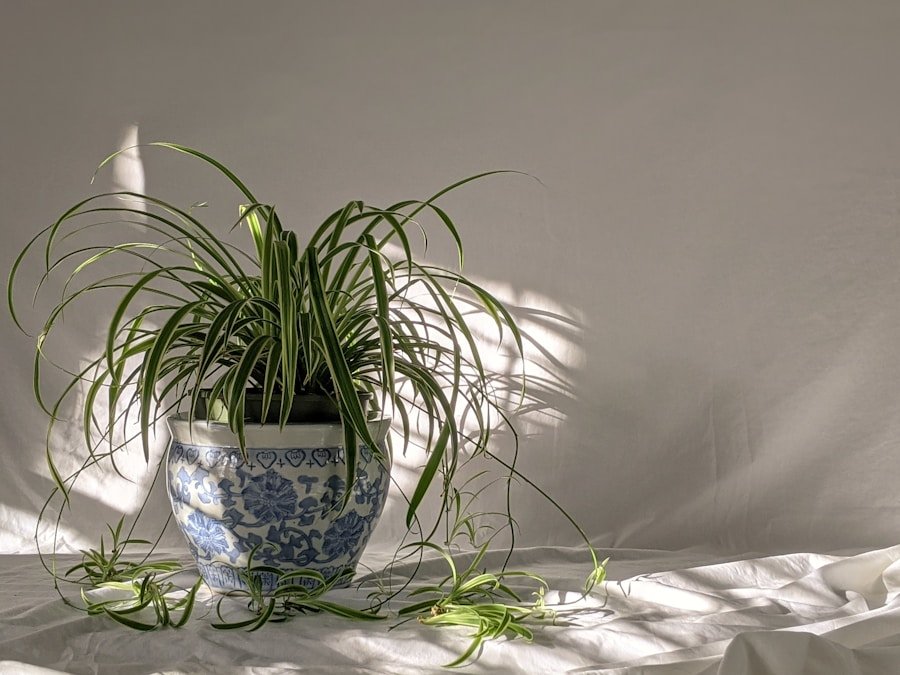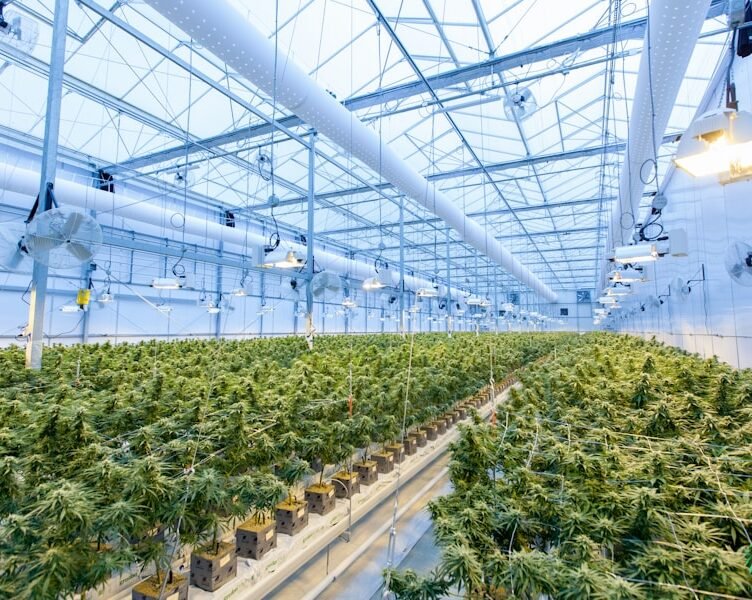Creating a safe and nurturing environment for babies is crucial, and indoor plants can significantly contribute to this effort. Beyond their aesthetic appeal, they offer numerous benefits for infants. For instance, they can improve air quality and create a calming atmosphere, making them a valuable addition to any nursery or play area.
However, it is vital to select plants that are safe and non-toxic for babies, as some species can be harmful if ingested. This article will delve into the advantages of baby-friendly indoor plants, highlighting the top 5 safe and non-toxic options, their role in enhancing air quality, and providing tips on selecting and caring for these plants. Additionally, it will address potential risks and precautions, as well as offer guidance on incorporating indoor plants into baby nursery decor.
Key Takeaways
- Baby-friendly indoor plants can create a soothing and safe environment for little ones
- Indoor plants can improve air quality and provide numerous health benefits for babies
- Top 5 safe and non-toxic plants for babies include spider plant, Boston fern, and rubber plant
- Tips for choosing and caring for baby-friendly indoor plants include checking for toxicity and proper watering
- Incorporating indoor plants into baby nursery decor can create a calming and nurturing environment for babies
Benefits of Baby-Friendly Indoor Plants
Improved Air Quality
Indoor plants are natural air purifiers, as they absorb carbon dioxide and release oxygen through the process of photosynthesis. This can help to create a healthier and cleaner environment for babies to breathe in.
Reduced Stress and Anxiety
The presence of greenery has been linked to lower levels of cortisol, the stress hormone, and can create a calming and soothing atmosphere in the nursery. Additionally, studies have shown that indoor plants can help to reduce stress and anxiety, which can be beneficial for both babies and their caregivers.
Regulated Humidity Levels
Indoor plants can also help to regulate humidity levels, which is essential for maintaining a comfortable and healthy environment for babies. Overall, the benefits of baby-friendly indoor plants make them a valuable addition to any baby’s living space.
Top 5 Safe and Non-Toxic Plants for Babies
When it comes to choosing baby-friendly indoor plants, it’s essential to select varieties that are safe and non-toxic for little ones. Some plants can be harmful if ingested, so it’s crucial to choose wisely. The following are the top 5 safe and non-toxic plants for babies:
1. Spider Plant (Chlorophytum comosum): This popular houseplant is safe for babies and has air-purifying qualities. It’s easy to care for and can thrive in various light conditions.
2. Areca Palm (Dypsis lutescens): This palm variety is non-toxic and can help to improve air quality by removing toxins from the air. It’s a low-maintenance plant that can add a tropical touch to the nursery.
3. Boston Fern (Nephrolepis exaltata): This lush and leafy fern is safe for babies and can help to increase humidity levels in the nursery. It requires regular watering and indirect light.
4. Rubber Plant (Ficus elastica): This hardy plant is non-toxic and easy to care for, making it an excellent choice for baby-friendly greenery. It can help to purify the air and add a touch of green to the space.
5. Baby Rubber Plant (Peperomia obtusifolia): This compact plant is safe for babies and has thick, glossy leaves that add a pop of green to the nursery. It’s low-maintenance and can thrive in various light conditions.
How Indoor Plants Can Improve Air Quality for Babies
| Plant Name | Benefits | Care Level | Toxicity Level |
|---|---|---|---|
| Spider Plant | Improves air quality, safe for pets | Easy | Non-toxic |
| Peace Lily | Filters air, adds humidity | Moderate | Mildly toxic |
| Rubber Plant | Low maintenance, air purifying | Easy | Toxic if ingested |
| Boston Fern | High humidity, air purifying | Moderate | Non-toxic |
Indoor plants play a crucial role in improving air quality, which is especially important for babies who are more susceptible to respiratory issues. The process of photosynthesis allows plants to absorb carbon dioxide and release oxygen, which can help to create a healthier environment for little ones to breathe in. Additionally, many indoor plants have air-purifying qualities, as they can remove toxins such as formaldehyde, benzene, and trichloroethylene from the air.
These harmful substances can be found in common household items such as furniture, carpets, and cleaning products, so having indoor plants can help to reduce the levels of these toxins in the nursery. Furthermore, certain plants can also help to increase humidity levels, which is beneficial for babies, especially during the dry winter months when indoor heating can cause the air to become too dry. By improving air quality and regulating humidity levels, baby-friendly indoor plants can create a healthier and more comfortable living space for little ones.
Tips for Choosing and Caring for Baby-Friendly Indoor Plants
When choosing baby-friendly indoor plants, it’s essential to consider factors such as safety, maintenance, and light requirements. Opt for non-toxic varieties that are safe for babies if ingested, and ensure that they are placed out of reach of curious little hands. Additionally, consider the amount of care and attention that each plant requires, as some may need more frequent watering or specific light conditions.
It’s also important to choose plants that can thrive in indoor environments, as they will be living in pots rather than in their natural outdoor habitat. When caring for baby-friendly indoor plants, be sure to water them regularly but avoid overwatering, as this can lead to root rot. Provide them with adequate sunlight or artificial light if needed, and keep an eye out for any signs of pests or disease.
By choosing the right plants and providing them with proper care, you can create a safe and healthy environment for your little one.
Creating a Calming and Nurturing Environment with Indoor Plants for Babies
The Positive Impact on Mental Well-being
The presence of greenery has been shown to have a positive effect on mental well-being, reducing stress and anxiety levels. This can be beneficial for both babies and their caregivers, as a calm and soothing atmosphere can help to promote relaxation and sleep.
Sensory Stimulation and Learning Opportunities
Additionally, the visual appeal of indoor plants can provide sensory stimulation for babies as they grow and develop. The different shapes, textures, and colors of the leaves can capture their attention and encourage curiosity about the natural world around them. Furthermore, caring for indoor plants can also be a valuable learning experience for older children, as they can observe the growth and development of the plants over time.
Creating a Peaceful Environment
Overall, incorporating baby-friendly indoor plants into the nursery or play area can help to create a peaceful and nurturing environment that promotes well-being and growth.
Potential Risks and Precautions of Indoor Plants for Babies
While baby-friendly indoor plants have numerous benefits, it’s essential to be aware of potential risks and take precautions to ensure the safety of little ones. Some plants can be harmful if ingested, so it’s crucial to choose non-toxic varieties and place them out of reach of curious hands. Additionally, some plants may have sharp or spiky leaves that could pose a risk of injury if touched or pulled on by babies or toddlers.
Be mindful of any potential hazards when selecting indoor plants for the nursery or play area, and consider factors such as thorns or irritants that could cause skin irritation or allergic reactions. Furthermore, be cautious when using fertilizers or pesticides on indoor plants, as these chemicals could be harmful if ingested or inhaled by babies. By being aware of potential risks and taking necessary precautions, you can enjoy the benefits of baby-friendly indoor plants while keeping your little one safe.
Incorporating Indoor Plants into Baby Nursery Decor
Incorporating indoor plants into baby nursery decor is a wonderful way to add a touch of natural beauty to the space while providing numerous benefits for little ones. When choosing plants for the nursery, consider factors such as safety, maintenance, and aesthetic appeal. Opt for non-toxic varieties that are safe for babies if ingested, and choose plants that are easy to care for and can thrive in indoor environments.
Consider placing them in decorative pots or planters that complement the nursery decor and add a pop of color or texture to the space. Additionally, think about the placement of the plants within the nursery, ensuring that they are out of reach of curious little hands but still visible and accessible for caregivers to care for them. By incorporating baby-friendly indoor plants into nursery decor, you can create a beautiful and nurturing environment that promotes well-being and growth for your little one.
In conclusion, baby-friendly indoor plants are a valuable addition to any nursery or play area, providing numerous benefits for little ones while adding a touch of natural beauty to the space. From improving air quality to creating a calming atmosphere, indoor plants can help to create a healthier and more nurturing environment for babies. By choosing safe and non-toxic varieties, providing proper care, and taking necessary precautions, you can enjoy the benefits of baby-friendly indoor plants while keeping your little one safe.
Whether you’re looking to improve air quality, create a calming atmosphere, or simply add a touch of greenery to the nursery decor, baby-friendly indoor plants are an excellent choice for creating a safe and soothing environment for little ones to thrive in.
FAQs
What are baby-friendly indoor plants?
Baby-friendly indoor plants are houseplants that are safe for babies and young children to be around. These plants are non-toxic and pose minimal risk if accidentally ingested or touched by little ones.
Why are baby-friendly indoor plants important?
Baby-friendly indoor plants are important because they can help improve indoor air quality, provide a soothing and calming environment for little ones, and introduce children to the natural world at an early age.
What are some examples of baby-friendly indoor plants?
Some examples of baby-friendly indoor plants include spider plants, Boston ferns, rubber plants, and palm plants. These plants are non-toxic and safe for children and pets.
How can I ensure that indoor plants are safe for my baby?
To ensure that indoor plants are safe for your baby, it’s important to research the toxicity of the plants before bringing them into your home. You can also place plants out of reach of children and teach them not to touch or ingest any plants.
Are there any indoor plants that are not safe for babies?
Yes, there are indoor plants that are toxic to babies and young children. Some examples of toxic plants include pothos, philodendron, and peace lilies. It’s important to research the toxicity of plants before bringing them into a home with young children.








1 Comment